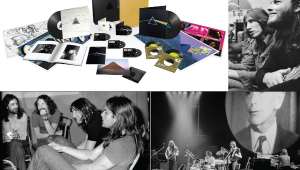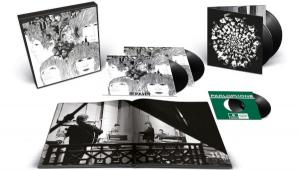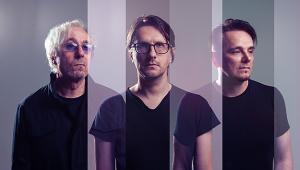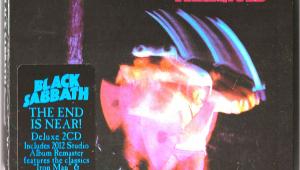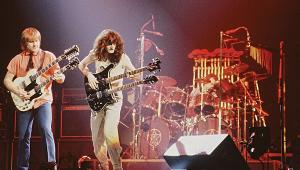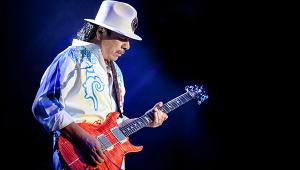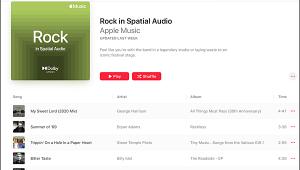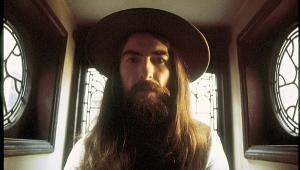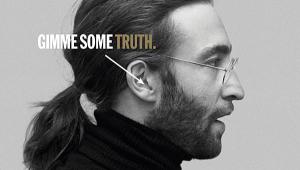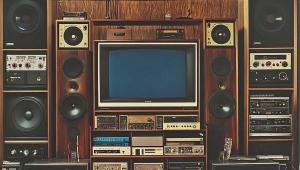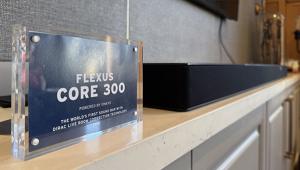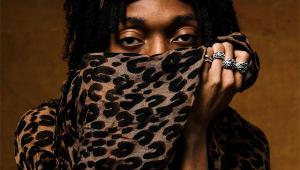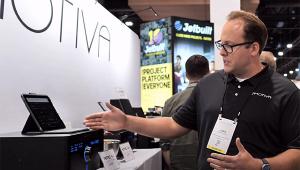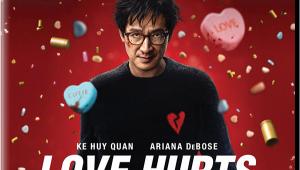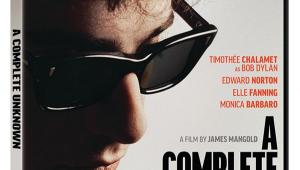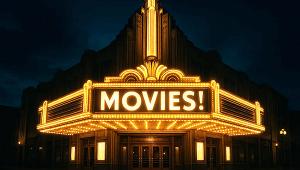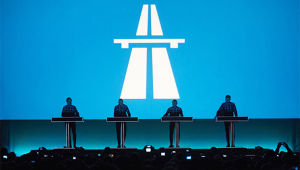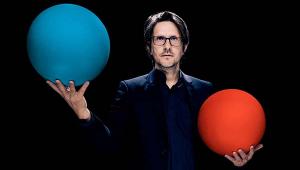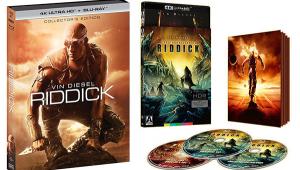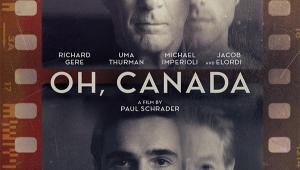I enjoyed this. I turned twelve years old on Aug. 16, 1969. Grew up about 75 miles from the site of the festival and even though I didn't attend, the people streaming through my little town on the way to and from was an eye opening experience.
Back to the Garden: Woodstock at 55
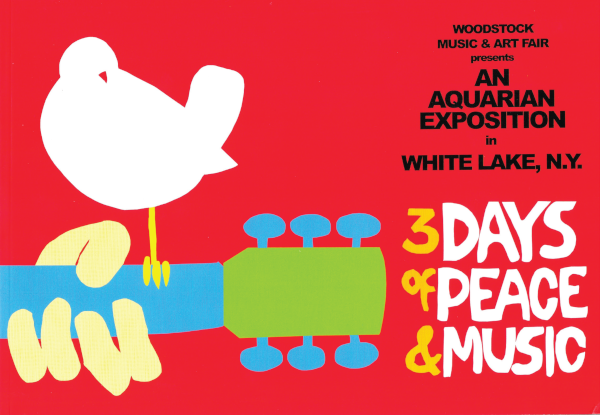
Indeed, the deeply felt vibes of three — well, technically, four — days of music, communion, and collective harmony instantly catapulted that long, heady, extended weekend of August 15-18, 1969, directly into the history books. The zeitgeist event that was Woodstock showed everyone how the counterculture ethos had spread and bled into the mainstream. Over a half-century-plus later, the core tenets of Woodstock are constantly being revisited and re-evaluated by generations old and new alike in their daily lives — not to mention by way of the voluminous related aural/visual offerings that have been shared across many a multimedia option in the interim.
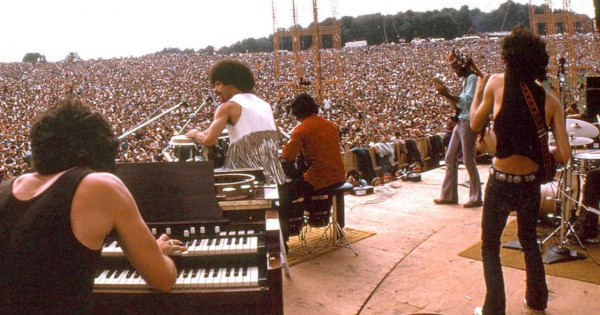
We Are Stardust, We Are Golden
To say there were challenges in capturing both the sound and the vision during a weekend strewn with all sorts of natural and man-made strife for the planned Woodstock film and soundtrack releases would be an understatement. “It was a big moment when Richie Havens hit the stage, and the sound worked,” Michael Lang, the event’s chief organizer, told me the first time we spoke about Woodstock over a decade ago. “Everybody could hear him, and he made that connection with the audience. That was a big moment of relief.” (Sadly, Lang passed away at age 77 on January 8, 2022.)
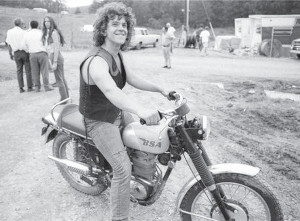 |
Chief organizer Michael Lang scouted the festival grounds on his wheels of choice. |
Visually speaking, Lang agreed the March 1970 Woodstock film itself — a three- hour-long cut directed by Michael Wadleigh, whose crew included an assistant director and film editor by the name of Martin Scorsese — quite accurately portrayed exactly what happened that weekend. “It was presented in such a great way and such a visceral way that it really brought the actual experience to the world. I felt it was captured beautifully,” assessed Lang. As for the audio side of things, Lang also felt that “Eddie and his crew were able to capture great live recordings without a lot of interference, feedback, and ambient noise. They just miked it well, and were able to reproduce a very true picture of the music.”
Kramer told me exactly how he did it — and with what. “The console had 12 inputs and 8 outputs, and that was it,” he detailed. “We were using Shure 565 [microphones], which were the predecessors of the Shure 58s, for literally everything. There were no condensers. There was no double-miking. It was just a matter of trying to figure out what each band was doing as they were doing it. It was a minor miracle that anything got recorded at all.” While ensconced in a backstage trailer, Kramer and sound engineer Lee Osbourne tracked the live performances on a pair of Scully 8-track recorders with 1-inch Scotch recording tape at 15ips, with everything eventually being mixed for posterity at the Record Plant in New York. Although Woodstock has seen numerous home-video incarnations over the years, Kramer emphasized that being able to work on the 2014 45th anniversary Blu-ray edition for Warner Home Video was “a wonderful opportunity to set the record straight and show what it could sound like.”
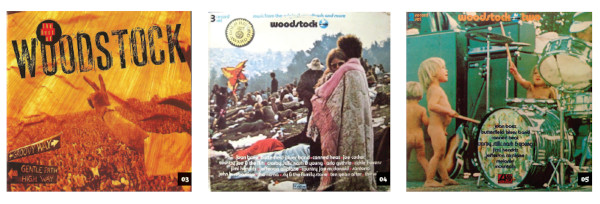
One Woodstock attendee who can personally corroborate how the sound was captured by Kramer, Osbourne, sound engineer Bill Hanley, and their crew is CE industry veteran John-Paul Lizars. He currently serves as the Director of HiFi Sales for Grimm Audio, the Netherlands-based manufacturer of notable high-end loudspeakers, digital music players, and audio cables. Lizars — who graduated high school just 2 months prior to Woodstock — humbly characterized his role at the festival as being a “gofer,” even though he had already established his concert-event bonafides by working at the respective Newport Folk, Jazz, and Opera festivals in Newport, Rhode Island, in 1968.
“I recall the Woodstock mixing system as being primitive as compared to today,” Lizars conceded. “There were at least four Shure M67 4-channel mixers and microphones, many different EQs, limiters, compressors, and — of course — many McIntosh MC3500 power amplifiers.” Behind the stage, three transformers provided the 2,000 amperes of current needed to power it all.
For his part, sound engineer Hanley was the one who supervised the construction of the massive speaker columns seen spread all across the grounds in the film, with 16 loudspeaker arrays residing in square platforms on 70-foot towers. The half-ton Altec-designed 3 x 6 x 4-foot (w/h/d) marine plywood cabinets on those towers each housed four 15-inch JBL D140 loudspeakers and Altec 4 x 2-cell and 2 x 10-cell horn tweeters. You’d think that configuration would be more than enough to handle the sound for such a massive crowd — and you’d be half-right. The audio team expected to be projecting the music to 200,000 people at most but had to instead contend with the effects of having a half-million bodies in their midst and as far as the eye could see.
Lizars admitted the stress of dealing with the conditions imposed by Mother Nature — coupled with the sheer expanded vastness of the attendees on hand and just the grand scale of the open-air upstate New York farm locale — threatened to derail the proceedings.
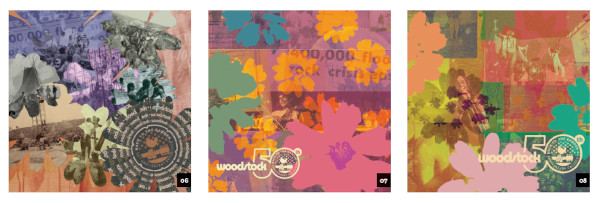
“As powerful as that mixing system was, it was no match for coverage of the crowd,” he confirmed. “As good as Hanley was, the scope of the event, the weather, the shimmy scaffolding that held the line array of those custom speaker bins, and the logistics all conspired for a frantic atmosphere behind the scenes. I recall a lot of yelling as tempers flared when bad things happened.” Even so, Kramer, Hanley, Osbourne, Lizars, and company all got through it together — and they were able to ultimately share with us an accurate sonic representation of a historical event that literally set the stage for numerous recurring heavy-hitter festivals that followed it, including Glastonbury, Bonnaroo, Coachella, Stagecoach, and Lollapalooza amongst them.
Everywhere, There Was Song and Celebration
Since the aforementioned initial 3LP soundtrack release in May 1970 — which fairly quickly sold over 2 million copies and reached No. 1 on the Billboard Top LPs chart — Woodstock has seen nothing short of a bountiful largess of releases on just about every format imaginable in the interim. In 1994, for example, Atlantic released a quarter-century-marker box set, Woodstock: Three Days of Peace and Music – 25th Anniversary Collection, featuring 50 tracks on 4CDs. Also in 1994, Warner Bros. issued the 225-minute Woodstock: 3 Days of Peace & Music – The Director’s Cut DVD — albeit sans extras.
And then, they really got down to doing it right on video. In 2014, Warner Bros. revised their 2009 Woodstock: 3 Days of Peace and Music – The Director’s Cut, 40th Anniversary Blu-ray, backing up the addition of the keyword Revisited at the end of that subtitle by adding Eddie Kramer’s Dolby TrueHD 5.1 surround mixes of three-plus hours worth of bonus material that didn’t appear in the original March 1970 Woodstock movie. They also included a third Blu-ray dubbed More Extras, containing then-previously unreleased performances from the likes of Santana, The Who, Crosby, Stills & Nash, Joan Baez, Jefferson Airplane, Melanie, Sha Na Na, and The Butterfield Blues Band. Additionally, Kramer and his team aurally revisited career-defining performances from the aforementioned Richie Havens, plus Joe Cocker, Sly & The Family Stone, Janis Joplin, Ten Years After, The Who, and Jimi Hendrix (to name but a few).

On the audio front, Rhino’s rectangular, peace-flag draped 2009 6CD box set, Woodstock – 40 Years On: Back to Yasgur’s Farm, increased the number of songs to a staggering 95 tracks. Then, on June 28, 2019, Rhino dropped the even-more-expansive 10CD Woodstock – Back to the Garden – 50th Anniversary Experience box set that houses 162 tracks — and, besides that, it was the first-ever Woodstock release to include live recordings of every performer at the festival. Luckily, I was able to procure myself a copy of that 2019 10CD set, along with its more economical 3CD and 5LP editions, to enable my Woodstock collection to be as complete as possible, natch. Both of those latter, somewhat abbreviated sets offer 42 tracks, respectively.
Upping the inclusive ante, Rhino/Cotillion also endeavored in 2019 to concurrently release the truly massive 38CD Woodstock – Back to the Garden – The Definitive 50th Anniversary Archive collection, housed in a plywood box and appearing in a limited edition of, naturally, 1,969 copies. This mondo box features a mind-boggling 432 tracks and scores of memorabilia — and it sold out immediately at the beginning of August 2019. (Alas, I was unfortunately unable to nab one in time.) As the time of this writing, the 38CD collection goes for anywhere between, yes, $2,000 to $10,000 on Discogs &mdash a bit too rich for my bank account blood at present, but if a more affordable option ever arrives, I’ll be first in line. Since 2019, there have been no additional Woodstock collections of note — though, at some point, I’d certainly love to see multi-volume, 3LP, and/or 4LP vinyl editions comprising every single one of those 432 tracks by way of all-analog remasters.
Meanwhile, I continue to honor Woodstock annually every August 15 by cueing up the 2014 Director’s Cut and bonus performance material on Blu-ray at, oh, let’s just say, 5:07 p.m. For the past two-plus-decades, the other important way I show my reverence and admiration for what the festival stands for has been to compile comments about Woodstock from a number of the artists who performed there themselves, along with gathering thoughts from select organizers, attendees, and influencees alike to chronicle this once-in-a-lifetime event for posterity, while they’re still with us.
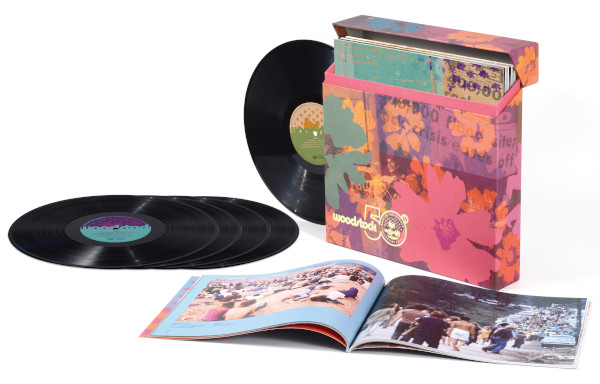
Every single quote that follows in the balance of this story has been obtained firsthand by yours truly. It’s been a long time coming — so, without further hippie-dippie ado, I now present to you the spirit of Woodstock as told by those who know it best, 55 years after the garden. We must be in heaven, man. . .
But You Know Life Is for Learning
MICHAEL LANG (chief festival organizer): I’ve come to terms with the fact that I’m always going to be talking about Woodstock. I think it represents people’s way of being in a community and relating to each other. It was a very encouraging moment. It gave people a sense of hope around the world. In many ways, it’s stood up.
GRAHAM NASH (harmonically gifted vocalist with Crosby, Stills & Nash — and sometimes Young — who played from 3:00-4:00 a.m. in both acoustic and electric sets on Monday, August 18, 1969): I really understand, in terms of society, how important Woodstock was. I mean, you can find a lot of that kind of vibe on our own CSNY 1974 box set [released in July 2014 by Rhino on Pure Audio Blu-ray, with a bonus DVD] — either from people who were at Woodstock, or who wished they’d been at Woodstock. I think they’re reliving that hippie kind of dream — and that’s why they came to see us.
ARLO GUTHRIE (folk-hero vocalist/guitarist who played from 11:55 p.m.-12:25 a.m. on Friday/Saturday, August 15-16, 1969): Imagine what would happen if an insurance company announced that, for the safety and well-being of their clients, fees would be waived for a year. The world would be astounded. But that’s exactly what the promoters of the Woodstock Festival did — and I think that’s why we’re still talking about it. It set an example of human decency, even at the expense of making a fortune. We could use some more of that these days, I think.
TOM CONSTANTEN (mercurial keyboardist then with the Grateful Dead, who played from 10:30 p.m.-12:05 a.m. on Saturday/Sunday, August 16-17, 1969): Our minds were already so blown. It was bigger than any of us could wrap our brains around. We knew we were onto something special, especially with all the people coming together to make music. We couldn’t quite make out what it was going to be like, but we knew that what was happening was so amazing.
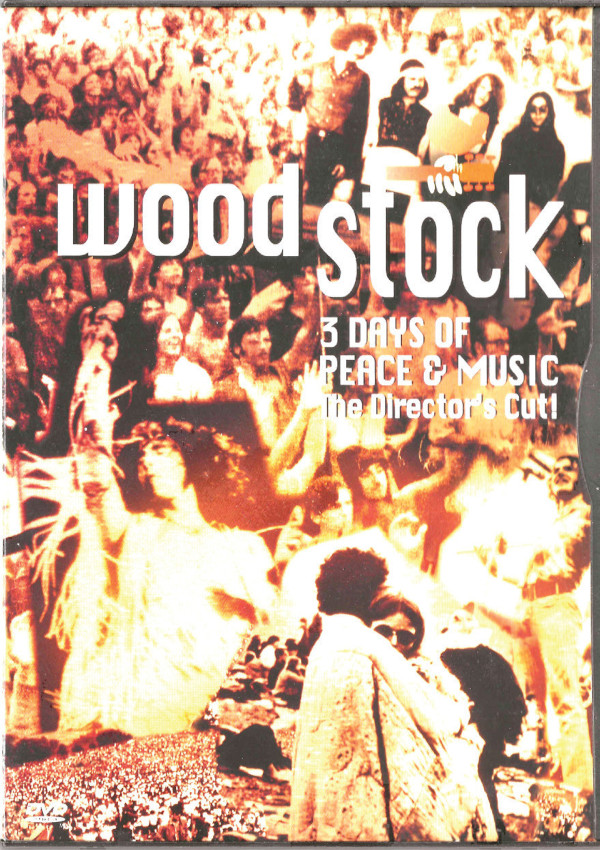
GREGG ROLIE (galvanizing keyboardist/vocalist with Santana, who played from 2:00-2:45 p.m. on Saturday, August 16, 1969): Nobody’s gonna let that one die, huh? (laughs heartily) Well, it was a milestone in music; it really was. Especially when the movie came out — it exploded. But nobody really knew that at the time. “Okay, they’re making a movie; that’s great.” You’re not watching any of this happening — you’re just playing. There were many festivals back then, and this was gonna be another one. But it turned into, “If you build it, they will come,” like [1989’s] Field of Dreams — or even [1977’s] Close Encounters of the Third Kind. It was wild. It turned out to be if you were there, you had a career. That was pretty much how it worked.
MELANIE (nascent folk singer/guitarist who played from 10:50-11:20 p.m. on Friday, August 15, 1969): I walked onstage an unknown person — and walked off a celebrity. It was instantaneous. It was incredible. I thought it was going to be this pastoral thing — arts and crafts, with families and picnic baskets. My first concern was, “How can I possibly do this? I’m somebody nobody’s heard of. I just have a guitar — and what am I gonna sing?” I didn’t even have a set written or anything. I had one song that was being played by Roscoe on WNEW-FM in New York, “Beautiful People.” I think he was the only one in the whole country playing that record. So maybe a quarter of a percent of those people at Woodstock had heard that record. It wasn’t identifiable. I didn’t even have a press photo or anything!
I was just waiting around all day to go on, and I developed this wonky, nervous cough. I guess Joan Baez heard me coughing, over from the upper-echelon tent. Her assistant, some beautiful flower child person, came over and said, “Joan has heard you coughing, and thought you might like this.” It was a little teapot with tea in it! This was my idol, saving me! [Melanie — full name, Melanie Safka — passed away at age 76 on January 23, 2024.]
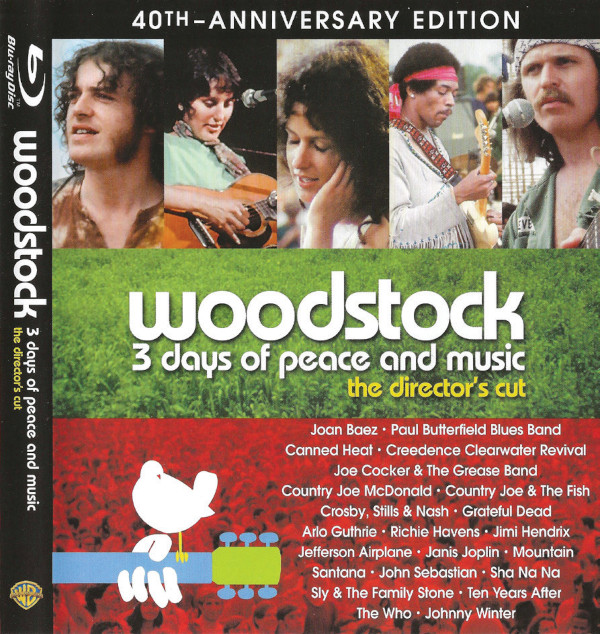
DOUG CLIFFORD (drummer for Northern California swamp rockers Creedence Clearwater Revival, who played from 12:30-1:20 a.m. on Sunday, August 17, 1969): All the big acts were sitting on the fence, waiting for somebody to take the plunge. We were the No. 1 concert draw and top record-selling band at the time &mdash so when we said “yes,” other people made a dash for the signing room. And I’m glad we said yes, because I’m not sure Woodstock would’ve happened otherwise. We lost out by not being in the movie — so many people still don’t know we were there! — but it’s nice that it [our set] finally got out there.
[MM adds: As Clifford notes, while CCR did not appear in the original Woodstock film, their entire 11-song set was finally released in August 2019 on LP and CD by Fantasy/Craft Recordings as Live at Woodstock, in addition to appearing on Disc 20 of Rhino’s 38CD Woodstock – Back to the Garden – The Definitive 50th Anniversary Archive box set. Three songs from their set also appear on Disc 5 of Rhino’s 10CD Woodstock – Back to the Garden – 50th Anniversary Experience collection.]
CLIFFORD: As we were coming in on the helicopter, there was a three-story building right next to where they were parking us. I saw some women on the third floor, hanging out of a window and waving at everybody. Whoever came in by helicopter, they were waving them in. I took a closer look, and it was Judy Collins and Joan Baez. And then I thought, “You know, this might not be too bad.” (laughs)
JOCKO MARCELLINO (charismatic drummer/vocalist of ’50s revivalists Sha Na Na, who played from 7:30-8:00 a.m. on Monday, August 18, 1969, which also happened to be the final set before Jimi Hendrix took the stage an hour later at 9:00 a.m. to close the festival): Hendrix saved our slot. He got us the gig more than anybody else, after seeing us play the Steve Paul Scene [a hip midtown nightclub] in New York. He got Michael Lang to see us and book us immediately, and we got our check for 350 dollars — which bounced. (laughs) But to have our performance of “At the Hop” appear in the documentary film was just priceless, since we were a brand-new act at the time. We only had a few gigs under our belt at that point. We still do about 20-25 gigs a year — all thanks to us being at Woodstock.
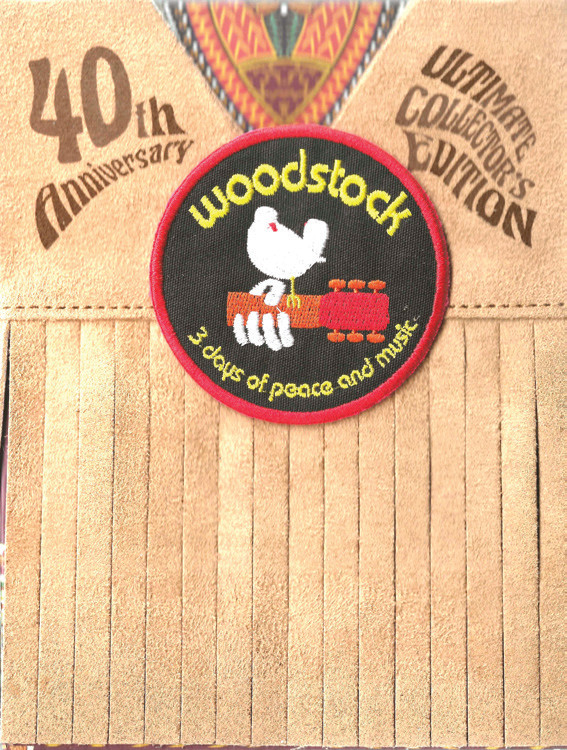
ROBBIE ROBERTSON (guitarist and chief songwriter of The Band, who played from 10:00-10:50 p.m. on Sunday, August 17, 1969): The promoters had asked us to close the festival and play last, because we were the only group actually from Woodstock! (chuckles) As Michael Lang said at the time, the reason they called it Woodstock — and wanted to do it in Woodstock — was because of us and Bob Dylan. They said, “We think it’s appropriate that you guys close the show because of that.” And I was like, “Uh, okay! That sounds fine, I guess.” I wasn’t sure what any of it meant.
When we got there, they said, “Oh my God — we told Jimi Hendrix he could play whenever he wants, and he wants to play last.” And then they said, “We would like you to go on when it gets dark on the last night of the festival.” We were okay with that. I had known Jimi from years before when he was calling himself Jimmy James, and he said, “Oh man, I’m sorry! I didn’t mean to make it a big deal.” I told him his apology wasn’t necessary. I said, “Listen — I don’t care. It’s completely fine. You can play whenever you want. We’re going to play [in the evening], then probably go back home.” (laughs)
And, as you know, Jimi played when the sun came up, when most of the people had left. But he played beautifully. Yeah, I was glad he was happy — and I was glad everybody was happy.
[MM notes: Robertson passed away at age 80 on August 8, 2023. Though The Band did not appear in the original Woodstock film, their set can be found on Disc 8 of Rhino’s 10CD Woodstock – Back to the Garden – 50th Anniversary Experience box set, as well as on Disc 30 of Rhino’s 38CD Woodstock – Back to the Garden – The Definitive 50th Anniversary Archive collection.]
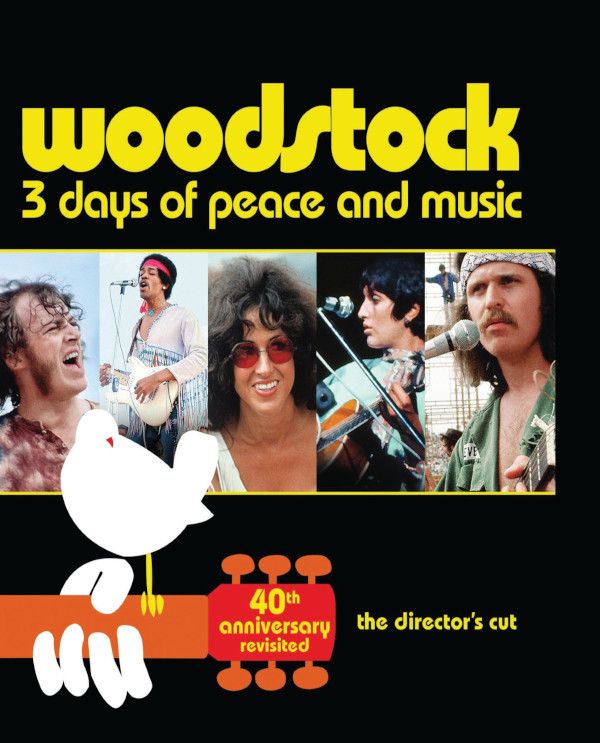
BOBBY COLOMBY (drummer and co-founder of Blood, Sweat & Tears, who played from 1:30- 2:30 a.m. on Monday, August 18, 1969): They [the Woodstock organizers] came to us very early on when they knew they’d have a festival, and they got us. And, just so you understand, to us, it was just a gig — a very muddy gig. You drive in, you go in the back, and you go onstage. It’s so funny when people say to me, “I saw you at Woodstock,” and I think, “But how far back were you?” If you were 400,000 people back, you didn’t see anything! (laughs)
So we’re backstage, and it’s delayed. Everyone’s delayed, and they’re coming up to me, going, “Hey man, I’m sorry.” I said, “It’s fine.” I’m just standing around on a plank of wood in the mud, and I’m saying, “No, it’s cool, it’s cool — don’t worry.” Finally, we go onstage, and the guy says, “Hey man, I’m sorry — you have no monitor.” I said, “Wait a minute.” I’m in the back, and the horns are at my left, way out in front. The singer [David Clayton-Thomas] is half a mile in front of me, the amps are going out to the front, and I’m behind everything. I can’t hear anything! If I don’t have a monitor, I’m just hearing drums. And I said to him, “Well, that’s not gonna work, so you better do something.”
[Bill] Hanley did the sound. One of the guys climbs up and pulls a horn down from the stack. They didn’t change the mix on it — they just wired it. I’m now getting a horn less than a foot from my ear that has the same volume that’s supposed to blast to 400,000 people. When I put the leads in it — the wires — just the sound of the air was loud! I’m sitting there, hearing all this loud volume without any sound yet, and when I count off “one” for the first song [“More and More”], it almost knocks me off my chair! It was ridiculous. I think I probably played half the gig with a hand over my ear.

Would I have wanted us to be in the movie? My answer is, f--- yeah, of course! Because all those bands benefited. But we never gave permission to anyone to be in it.
[MM notes: While Blood, Sweat & Tears did not appear in the original Woodstock film, their entire set appears on Disc 32 of Rhino’s 38CD Woodstock – Back to the Garden – The Definitive 50th Anniversary Archive box set, while four songs from that set are on Disc 9 of Rhino’s 10CD Woodstock – Back to the Garden – 50th Anniversary Experience collection.]
I’m Going to Join in a Rock & Roll Band
ROLIE: Yeah, “Soul Sacrifice” is when it really came together for us [Santana]. We were kind of struggling through tuning problems — you know, everybody had problems. But that’s when it was coming together. We were supposed to play hours later [on Saturday, August 16], but they threw it on us: “Well, you guys are here, and you’re going on now [at 2 p.m.].” Whoa! Well, okay!
Of course, we wanted to play well. The only thing to do was to focus on the playing. Santana was the kind of band where we’d play to each other like a jazz band. Songs evolve, and the height for a player was about the soloing. I’ve heard Santana music described as jazz, guitar, B3, and Latin percussion put together. (chuckles) No matter what you call it, when you hear us at Woodstock, it’s unmistakable what it is, and who it is.
CONSTANTEN: Strange to say, I had a pretty good time of it at Woodstock. I could hear myself and my Hammond B3 pretty well that day, and the sightlines were good — which is important. I could see and hear the other guys — good old Jerry [Garcia] over there, and then the drummers [Bill Kreutzmann and Mickey Hart]. Mickey had this cannon he would fire off in this certain spot in the set, so I knew when to duck. (pauses) I hope I didn’t spoil the surprise for anyone.
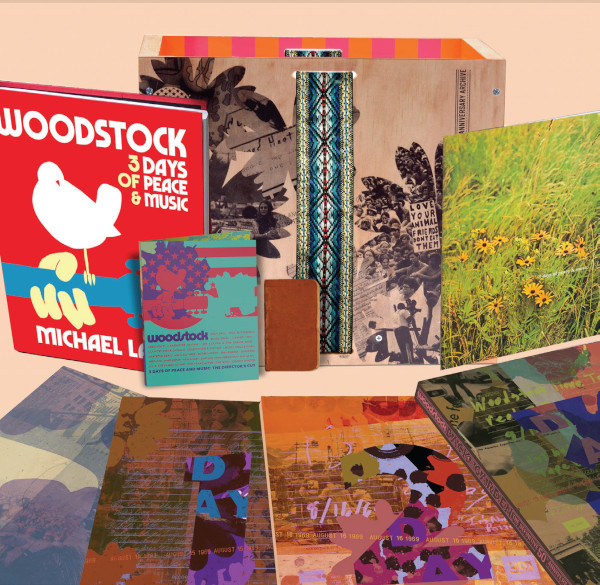
When the Grateful Dead played Woodstock, there were problems with the electricity and the grounding. The guitar players [Garcia, Bob Weir, and bassist Phil Lesh] were getting shocked with the strings. I was behind the Hammond B3 organ and that wasn’t my problem, but it certainly did dampen the atmosphere, in a way. The sheer weight of our equipment at the time — it wasn’t quite The Wall of Sound yet, but it was heavy. They couldn’t fit it onstage in the usual way. The way they had it set up was on this Lazy Susan that would spin around for the next act so they could start playing. Well, we were so heavy that the Lazy Susan was too lazy, and couldn’t get us up. (MM laughs) Meanwhile, we were feeling the stage sort of moving, which gave a little apprehensive edge to everything.
[MM notes: Though not in the film except for a brief, er, imbibement-oriented interview segment with Garcia, the Grateful Dead do appear in the bonus material on the 2014 Woodstock Blu-ray on Disc 5 on Rhino’s 10CD Woodstock – Back to the Garden – 50th Anniversary Experience collection, and on Discs 18 & 19 of Rhino’s 38CD Woodstock – Back to the Garden – The Definitive 50th Anniversary Archive box set.]
MELANIE: It started to rain [on Friday night] and I thought, “Ahhh, people are going to go home now. It’s over!” But then I heard the announcer — I think it was Wavy Gravy — saying the Hog Farm was passing out candles, and you should light the candles and hold them high to stop the rain, or something. I wasn’t really hearing it, but I absorbed it. That’s what came out in the song I wrote after Woodstock, “Candles in the Rain.” [Melanie released “Lay Down (Candles in the Rain)” as a single in March 1970, and it reached No. 6 on the Billboard Hot 100 Singles chart.]

It looked like fireflies out there, coming closer and closer. It was this powerful image. When I went onstage, I had an out-of-body experience. Yeah, I wasn’t there. I finally came back to myself, and sensed I was safe and was gonna sing my ass off. (laughs) They liked me, and it was okay — and I sang a whole set. Playing “Birthday of the Sun” — it was spontaneous. I had just written that song. No one had heard it before. It was probably the only performance that ever went out publicly. After I was done, I was flying! “What was that?” It was an incredible flow of humanity toward me, and I had never experienced anything quite like it. Before that day, I don’t think I had ever sung for more than 500 people, ever. It was just me and a guitar out there.
RIC LEE (drummer for Ten Years After, who played from 8:15-9:15 p.m. on Sunday, August 17, 1969): At that point, we were used to playing in front of festival crowds as big as 50,000, but nothing quite like what we saw at Woodstock. As the sun went down, I think we were the first act on with the stage lights. It was still like looking out at a sea of people, though. We knew what was out there because we flew in over it. Since there were no screens in those days, people had to look directly at us onstage — but you couldn’t really communicate back beyond 25, maybe 30, rows out.
Did we save the watermelon Alvin Lee took with him off the stage after our set was over? Oh, I wish! (chuckles) [Guitarist/vocalist Alvin Lee, no relation to Ric, scooped up a huge watermelon and slung it over his shoulder after Ten Years After ended their set with the instantly iconic 12-minute performance of “I’m Going Home.”] I’ve actually got a very small honeydew melon in my kitchen, and I was doing a Zoom call with somebody the other day. They said something about Woodstock, and I said, “Yeah, that’s the watermelon over there.” They probably bought it! (both laugh)

We Are Billion-Year-Old Carbon
CONSTANTEN: How long will the legacy of Woodstock last? Well, people are going to look at the music more, and the mud less. (both laugh) That’s how it works. It’s wonderful when the light shines down through the years. And it’s a wonderful thing to share that light with those who will come to it in the future.
MELANIE: Oh, the mythologizing will continue. It will be bigger than life. God almighty might have been there, for all I know. (laughs) It was astounding because people just did it. It was almost a silent calling, like Close Encounters of the Third Kind! It was like somewhere in dreams and people’s subconscious. They knew they had to go. They were being called.
ROLIE It is an ongoing saga of a phenomenon that has never been repeated, and I don’t think it ever will be. It’s kind of like the land rush in Oklahoma — they’re never gonna do that again either, you know? (laughs) It’s always going to be a point of history that 500,000 people got together, listened to music, and didn’t harm each other. Wow. You know? It happened.

LEE: I think the one thing why Woodstock is still so iconic is because Woodstock did exactly what was on the agenda. It was based on love.
LANG: Woodstock seems to be something rather eternal. It always represents that moment where people are shown at their best, given the possibility in the world where they relate to each other with that level of respect in that kind of community. That’s why Woodstock endures, really. I think it has something to do with allowing the human spirit to shine through and create an environment where people can be at their best.
The interesting thing is, anyone I meet from that era — every one of them — says it was life-changing for them. I think it was life-changing in the sense of possibility, and a way to feel more open to each other. Kids pick up on that too. They look at it as a moment where they wished they could have that experience.
Most of the people who played that weekend were of the same cultural sphere as the audience. It really was the thing where the audience was the star. It was something the artists were striving for and talking about, writing about, and singing about. Everybody there really felt that.
- Log in or register to post comments

I wasn't even 10-years old yet, but through my older sis, AM radio (it was our social network), and Life/Look magazine I was convinced Woodstock was the coolest thing ever. Funny thing...I'll bet my parents cringed as they were both older when they had me (D,born 1913; M, born 1918) and this probably was akin to some kind of debachery. In reality turns out this is the only "social experiment" whereby an almost unbelievable mass of people ever got together in a true semblance of "peace, love and harmony" (i.e., read no murder). But, hey there was some of the most glorious music of a most productive and rich musical era ever. Just by my fertile youthful mind the seed was planted I had to get to Haight/Ashbury or at the least Atlanta's slightly scaled down "Peachtree Street". What could be better than rock and roll, non-conformist fashion sense, and beautiful gals with that mindset? Reality check: I realized before I graduated high school that the free love hippie peace movement was a lazy excuse to indulge far too much in one's vices. Not that I was a recovering addict at 17, far from it, the movement failed to make a difference except for maybe dumbing everything down and at 17 it looked stupid. Not everything was stupid, however. The music was amazing and nearing 60-years later still is. Instead of any kind of delusion watching the "no rules" behavior of the time it's almost slightly sweet we were ever so innocent this was shocking. That really doesn't interest me though cause it was the music, it is the music, and it will always be the music. It is a treasure to revisit through the various releases that comprise the original one and only Woodstock Festival. Whatever the flaws of the whole idea they were small and the overall positive impact tremendous. It's sad that in today's world this type of off the scale get together is so wrought with predicted and unknown failure points. Did (and does) Devo know something...of things already in motion as the free love/flower power era was fading that our culture was DEVOLVING? Maybe, but here's a highpoint in '69 when the plus column was killing it against the debits. Good remembrances with the ultimate audio aids.


More than half a century later, Woodstock remains a reference point for those reflecting on the intersection of art, politics, and social change. Its music, like that of Havens, still speaks to the longing for freedom and connection, and the festival’s legacy is continually revisited in various forms of media and culture, reinforcing its lasting impact on generations.
source game: Block Blast

When it comes to finding a vivaio a roma, you’ll uncover a fantastic array of nurseries throughout the city. These nurseries specialize in a wide range of plants, from flowering varieties to robust trees, catering to every gardener's taste. Many vivai a Roma also offer valuable resources like gardening workshops and expert consultations to enhance your skills. Whether you're a beginner or an experienced gardener, you’ll find plenty of inspiration and support. Explore the lush options available and bring home some greenery that thrives in the Roman climate!

The diverse range of art and music from the festival is celebrated, emphasizing its legacy in shaping modern music and festivals. Go Check: Locate Grabba Online

Explore the legacy of Woodstock in this nostalgic piece. Meanwhile, unwind with the addictive game Tiny Fishing.

Thank you so much for this! It's truly a great post. Look it's Refinishing services Boise

This is a great post. Thank you for sharing.
Check out Ducted Aircon Blue Mountains

"Woodstock showed how creativity brings people together, and today, apps like Wink (winkkproapk.com) make it easy for anyone to create and share their own artistic vision. It’s amazing how technology keeps the spirit of self-expression alive!"

you guys dont know music like these guys do siding companies kansas city

